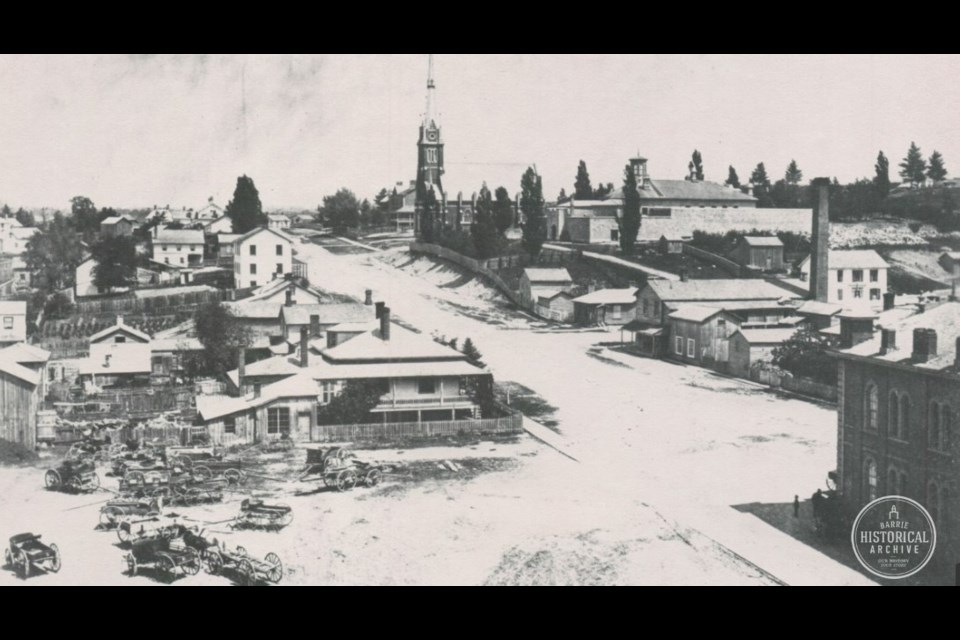Mother’s Day, as we know it today, was a new spin on an old English custom known as Mothering Day.
Its revival in the early 1900s came just as Mary Anne Clayton was raising her large brood of children.
It is my hope she received baskets of flowers and stacks of cards because that woman more than deserved those things. Nine boys and three girls. Can you imagine?
In 1879, Mary Anne Kenny married John Clayton, the son of an Irish-born carpenter. Her Clayton in-laws were involved in the shipbuilding industry that once thrived on the waterfront in Kingston, Ont.
Mary Anne’s father, Dennis Kenny, was a sailor and a native son of Ireland.
After their marriage, the Claytons’ home quickly filled with little ones. Of course, this was late-19th-century Ontario and losses were heartbreakingly common as well.
Scarlet fever took little Justin, while Martin succumbed to meningitis. Bergin arrived in this world with a twin sister, who did not survive long. Henry was 18 when he stepped off a train and into the path of another.
After Henry’s death in 1900, the Grim Reaper kindly stayed away from the Clayton house for a long spell.
John Clayton once ran a boot and shoe business on Dunlop Street. In 1890, he gave up operating his own shoe shop and, afterwards, went to work for other businessmen. He spent more than a decade in the employ of J.C. Irwin and continued in the same shop after it was acquired by Sutcliffe & Sons in 1909.
For years, he acted as deputy returning officer for local elections. He was also the longtime choirmaster at St. Mary’s Catholic Church and a singer of some talent himself.
Naturally, Mary Anne was at home tending to the household and trying her best to keep her children out of mischief and danger. On occasion, the exploits of some of her boys made it into the local papers.
In April 1895, she gave birth to twins, her second set in two years. Fred and Agnes were born April 14.
One month later, eight-year-old Dalton Clayton fell into a well. Fortunately for him, Mary Anne heard the boy’s screams and pulled her son to safety.
That same week, young Gerald Clayton wandered down to the waterfront and ended up into the bay at John Carley’s wharf. Capt. Lyon spotted the seven-year-old in the water and rescued him. The Northern Advance reported it was some time before he was resuscitated and that the boy had a close call.
When the Great War broke out in 1914, Mary Anne and John Clayton had six strong sons ranging in age from 16 to 31 years. Excellent soldier prospects.
Bergin was the first to sign his name on enlistment papers. He joined the Canadian Expeditionary Force in February 1915 at Camp Niagara and sailed to England in 1916. He was not long on the battlefields of France when a shell exploded and the shrapnel cut his nose and blackened his eyes.
Surprisingly, not much mention of this frightening injury appears in his records. As bad as it must have been, it did not prevent him from returning to the front lines after a short stay in hospital.
More was made of the next wound he suffered. In 1917, at Passchendaele, a machine gun bullet found his left knee and Bergin Clayton was unable to carry out his duties as a soldier for quite some time.
He did return to the fighting and was hospitalized yet again when he contracted a serious case of Spanish influenza. Yet, he survived.
In a letter home to his mother, Pte. Bergin Clayton quoted one of the doctors who had attended him. He was told he should be glad he was born lucky rather than rich, and the soldier wholeheartedly agreed.
Each week, the Barrie Historical Archive provides BarrieToday readers with a glimpse of the city’s past. This unique column features photos and stories from years gone by and is sure to appeal to the historian in each of us.



